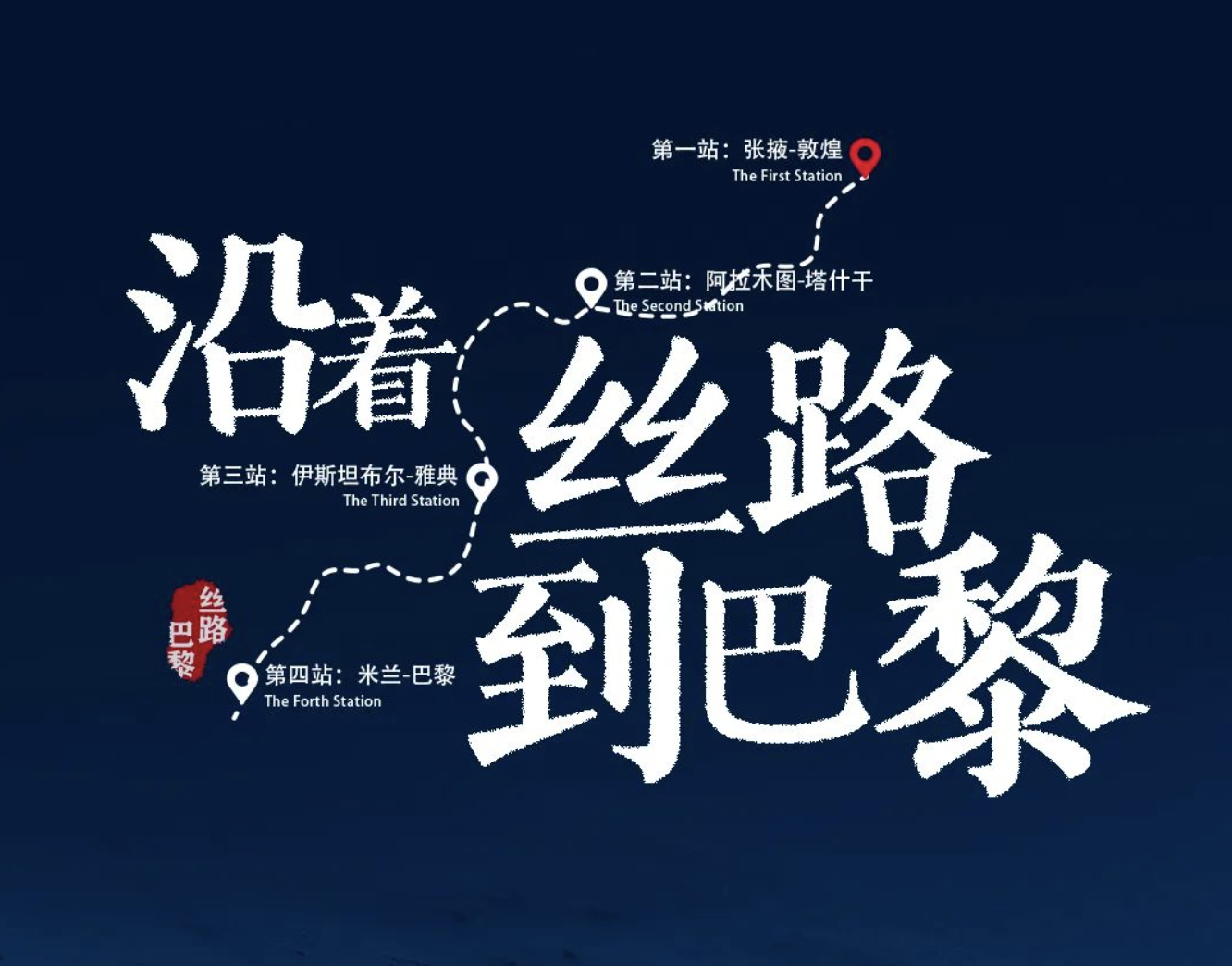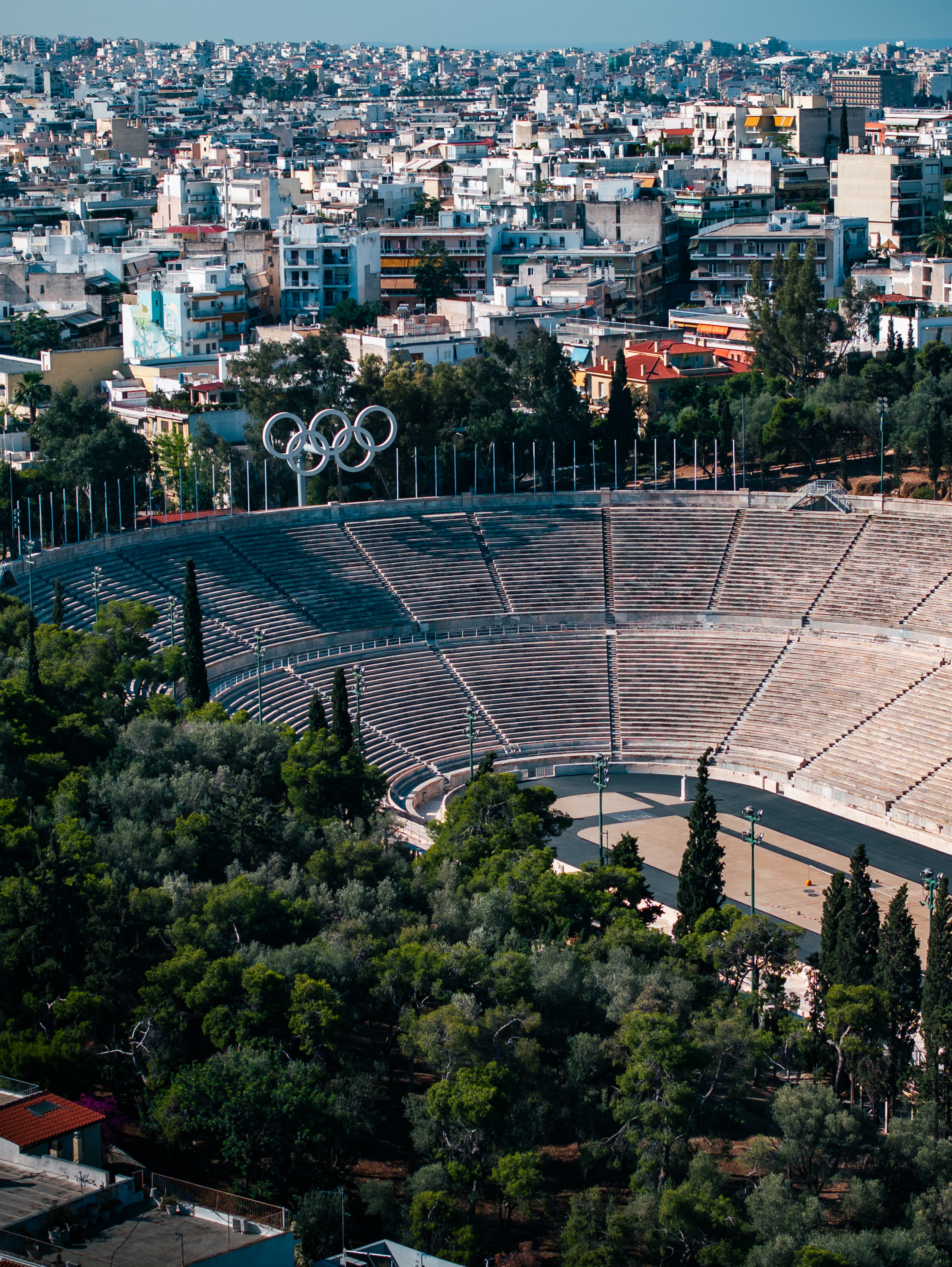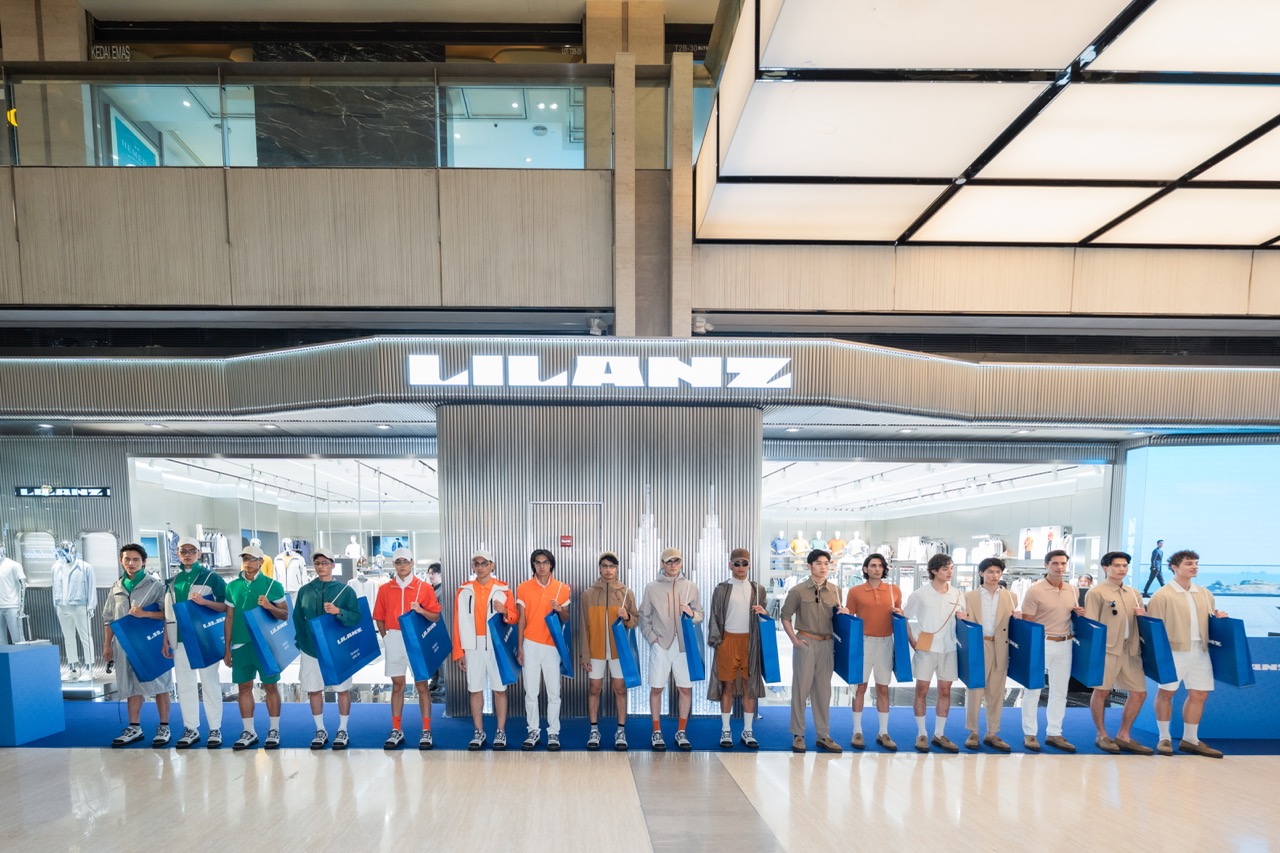During the fervor of the Olympic Games, the Chinese National Geography magazine undertook an exploration and discovery journey “Along the Silk Road to Paris”:
From the Jade Gate Pass, untouched by spring breezes, to Samarkand and Bukhara in Central Asia, then to Athens in Greece, the birthplace of the Olympics, and Como, Europe’s silk center, the “Discovery Ambassadors” team traveled through seven countries and thirteen cities. They visited key Silk Road sites, ultimately reaching Paris, the host city of the current Olympic Games.

The vast Silk Road, stretching across Eurasia, has woven the most magnificent and grandiose ties in human history. It transcends time and space, promoting cultural and economic integration among the countries along the route. Along this long journey, exquisite silks, ceramics, and tea were relayed by Sogdians, Persians, Arabs, and Greeks, facilitating the exchange of lifestyles and aesthetics between the East and the West.
Chinese menswear brand LILANZ participated as a strategic menswear partner, exploring the magical natural landscapes and rich cultural history along the route, witnessing the civilization exchanges on the Silk Road.
[qqv width=”600″ height=”350″]https://v.qq.com/txp/iframe/player.html?vid=z355932m4my[/qqv]
Interestingly, the “Discovery Ambassadors” team members wore LILANZ SMART elite series suits, traversing the canyons in Zhangye, walking through the desert at the Jade Gate Pass, conversing on ancient terraces in Bukhara, and strolling the streets of Paris. Whether contrasting with outdoor scenes or blending with urban landscapes, they presented excellent visual communication effects.
Who are the “Discovery Ambassadors” team members?
In Zhangye, Gansu Province, at Pingshanhu Grand Canyon, a group rode camels through coarse gravel and sand, advancing into a red landscape along winding paths at the foot of the mountains, with peaks overlapping on both sides, showcasing years of wind and sand erosion.
Led by Li Shuanke, President and Editor-in-Chief of Chinese National Geography, the “Discovery Ambassadors” team included sports champions Zhong Man, Bao Chunlai, and Qi Guangpu, meteorologist Feng Shu, Antarctic ambassador Wang Yuheng, young actor Gao Zhiting, popular science influencer Zhang Chengliang, and Douyin travel blogger Captain Han.

From left to right in the photo: Gao Zhiting, Wang Yuheng, Li Shuanke, Feng Shu, Qi Guangpu, Zhong Man
Gansu native Li Shuanke has long been engaged in research on the geomorphology and geology of the Antarctic, Arctic, and Qinghai-Tibet Plateau. As a geographer, he explained the natural scenery and geographical features along the route, uncovering deep historical and cultural knowledge.
In the Jinta Temple Grottoes in Zhangye, looking up at the graceful flying sculptures, Olympic champion freestyle skier Qi Guangpu related them to his beloved sport: “The images of the flying sculptures are very similar to our rotational movements in the air. The graceful forms of the flying sculptures are what we strive to present in our aerial performances.”
At Suoyang City in Guazhou, overlooking the ancient Han and Tang cities, Olympic champion fencer Zhong Man recounted the origins and development of fencing. He won the men’s individual saber gold medal at the 2008 Beijing Olympics – China’s first fencing gold in 24 years. After retiring in 2017, he became the coach of the Chinese saber team.
The “Discovery Ambassadors” team is full of talent, perfectly embodying the core audience of the LILANZ brand.
This is LILANZ’s fourth collaboration with Chinese National Geography. Li Shuanke, Wu Qiong Xiaoliang, and Wang Yuheng are familiar faces, having participated in the “Most Beautiful Highways and China’s Ultimate Landscapes” inspection plan.
In this Silk Road exploration journey, LILANZ continues to select professionals from various fields: athletes’ perseverance, geographers’ erudition, adventurers’ curiosity… Through them, LILANZ clearly conveys its brand image and spirit to its target business audience.
Where did they go? A look at some “precious” stops
The starting point of this exploration journey, Zhangye, located in the middle of the Hexi Corridor, was named for its geographical significance. In the Western Han Dynasty, it was known as “张国臂掖,以通西域” (Zhang Guo Bi Ye, Yi Tong Xi Yu, transliteration. Loosely translated, it means to “Extend the arms of the nation to protect the border, and thus connect with the Western Regions.”) serving as a major commercial town and strategic pass on the Silk Road.

Zhangye’s unique Danxia landforms (pictured above) were formed by long-term weathering and water erosion of red sandstone, resulting in isolated peaks and steep rocks that showcase a magnificent “red like a damask, bright as rosy clouds” spectacle. The beauty of “Golden Zhangye” originates here.
From Zhangye, through Dunhuang, and about 90 kilometers northwest, lies the Jade Gate Pass. The flat, vast Gobi Desert extends endlessly, with the Jade Gate Pass silently standing amidst the flowing sands, facing the Han Great Wall along the Shule River. The ruts left by ancient carriage wheels on the Gobi remind us of the prosperity of the Silk Road.

The Jade Gate Pass, established during the reign of Emperor Wu of Han, was one of the gateways to the Western Regions on the Silk Road. To the north was the Jade Gate, to the south was the Yangguan Pass. Heading southwest from Dunhuang through the Yangguan Pass led to Yutian and India, while heading northwest through the Jade Gate Pass led to Loulan, Tashkent, across the Pamirs, and to today’s vast Central Asia, eventually reaching the Mediterranean coast.
Entering Kazakhstan, the scene in Alatau National Nature Park changes dramatically from the desert’s yellow sands to lush greenery at the foot of the mountains, transitioning to broadleaf forests, coniferous forests, alpine meadows, and the dazzling snowy peaks. President Li Shuanke introduced various natural vegetation, presenting a delightful view.

A horse racing event encountered in Kazakhstan
In Almaty, Kazakhstan’s capital, the “Discovery Ambassadors” team visited local bazaars (markets) brimming with naan, beef and mutton, fruits, and vegetables. In Tashkent, the capital of Uzbekistan, they tasted the local specialty plov in a city known as the “Center of Plov in Central Asia.”
Once, the rich fruits and vegetables of the Western Regions, such as walnuts, cucumbers, and coriander, were introduced into China via the Silk Road; plov, originating from India, spread to various Central Asian countries, influencing Xinjiang to the east and spreading to the Middle East to the west.
The Silk Road witnessed mutual influence among civilizations through the exchange of goods.
In Samarkand, the “Discovery Ambassadors” team visited Central Asia’s only handmade paper workshop. The paper-making technique, introduced from the Tang Dynasty in the 8th century, has been passed down: soaking mulberry branches, peeling, boiling, drying, pounding, screening, pressing, drying again, and polishing. These eight steps mirror China’s ancient papermaking craftsmanship.
Like papermaking, silk from China was a core commodity defining the “Silk Road.”

In Como, Italy – Europe’s largest silk center (pictured above) – the “Discovery Ambassadors” team visited the Silk Museum (Lake Como Silk Museum). Since the 13th century, Como has exported silk throughout Europe, along with sericulture and weaving techniques, gradually nurturing significant silk producers such as Mantero, Frey, and Clerici.
The prosperity of Como’s silk supply chain has laid the foundation for the development of the Italian fashion industry. Today, it remains a holiday destination with numerous luxury brands and luxurious hotels.

In Athens, Greece, the Panathenaic Stadium embodies crucial moments in Olympic history. The first modern Olympic Games were held here in 1896, and the flame for the 2024 Paris Olympics was passed on at this stadium. The stadium combines classical Greek architectural styles with modern designs, exuding grandeur amidst classical solemnity.
Why Suits? The Advancement Journey of a Chinese Menswear Brand
The team members stood before the rugged rock formations, their black and gray suits contrasting sharply with the red rocks under the blazing sun of the Northwest. The juxtaposition of their refined, sleek appearance against the rough, fierce backdrop was striking.

This scene not only caught the eye but also sparked curiosity: Why were they wearing suits here?
Suits hold a special significance for the LILANZ brand. The creation of the first LILANZ suit in 1987 marked the beginning of the brand’s entrepreneurial journey. For over 30 years, LILANZ has participated in and witnessed the evolution and advancement of Chinese suit culture.
As LILANZ’s core product, the SMART elite series suits continue to carry the brand’s DNA and have become the latest driving force behind the brand’s “ultimate product” strategy. This strategy starts with comprehensive internal reforms, focusing on the specific needs of consumers. Designers now develop more targeted product planning schemes, shifting away from the traditional model of first developing and then selecting products.
Under this new development model, designers have more energy to delve deeply into their work, embodying a “dig a thousand meters deep in a meter of width” philosophy. With a focused and professional brand attitude, they continue to cultivate various categories in the business menswear field, striving for product concentration in each category. The previously launched water-repellent down jackets and washable shirts are vivid and powerful examples of this approach.
The special significance of suits to LILANZ demands that each upgrade and iteration be carried out with careful consideration to achieve the “ultimate.” Following the successful release of the water-repellent down jackets and washable shirts, which received genuine praise from consumers, the feasibility of the “ultimate product” strategy was initially validated. Consequently, LILANZ embarked on a renewal of its core suit category.

In the image above, LILANZ’s SMART elite suits incorporate Italian design styles, replacing the conventional loose fit with a new slim fit. The double-button peak lapel is simple and elegant, and the double-vented waist design optimizes the waistline. The lower body is paired with cropped slim trousers, featuring a neatly tapered leg opening for a clean and comfortable fit. The main fabric is wrinkle-resistant and drapes well, while the cutting is precise and three-dimensional. Additionally, high-quality materials and exquisite craftsmanship are used for the accessories, linings, zippers, and buttons.


| Image Credit: LILANZ, Chinese National Geography
| Editor: Maier



